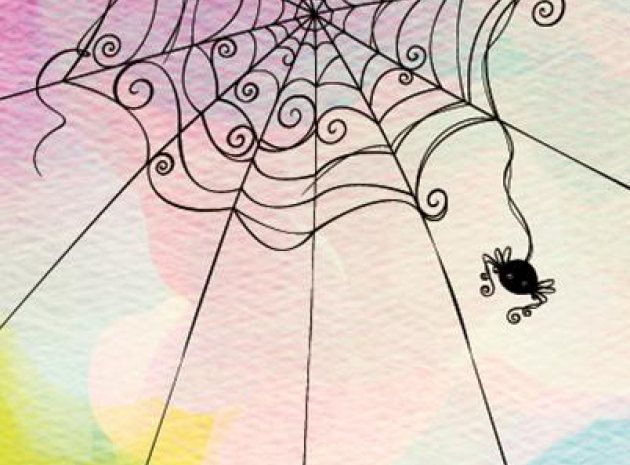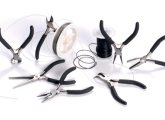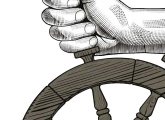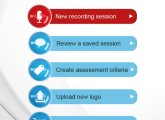We use narratives every day in the way we communicate. When we share an experience or reminisce about the past and also when we plan the future, a story pattern comes to light. Think about it for a second. You’re planning a class or session, so in the simplest form it has to have a beginning to set the scene and give some background, it has to have a middle where you deliver activities and exercises related to your topic, and it has to have an end where you tie everything together and re-inforce your core message. The ancients recognised the power and structure of narratives and used tales to make sense of the world and build belief systems. They created folk tales in this basic format and used them as blueprints on how to behave and how not to behave. To them stories were teaching tools that could deliver specific messages.
Creating a blueprint
The Greeks were big fans of a good yarn, interspersing fantastical characters with everyday problems and situations. In essence they brought them to life in a big way so that the lessons and themes witwhin the narrative were amplified.
For example when the maiden Arachne challenges the goddess Athena to a weaving competition, believing she is the best weaver in the world, she takes on the wrath of the goddess. Arachne is the clear winner, leaving Athena angry and humiliated. In revenge she destroys Arachne’s exquisite work. Arachne is mortified; having put her heart and soul into her weaving, she tries to hang herself but Athena catches her just in time. She turns the rope into the thread of a spider’s web, and Arachne into a spider. This might not be the ending that Arachne hoped for, but it does mean that she can continue to weave beautiful webs throughout the world.
This tale is cleverly put together in that it explains the natural phenomenon of spiders’ webs and their existence whilst dealing with the earthly concerns of jealousy, competition and betrayal. There are a number of lessons to be learned depending on your perspective, which makes it a great tale to use in class. Perhaps you might storyboard it out together and then consider what the story is a blueprint for, ie. what is it telling us about how we should behave and interact? Or you could take it a step further and get your class to work in groups, drawing the storyboard as a series of pictures and bullet points but stopping at the point of crisis – the moment where the story could go in any direction. In this case it’s just after the competition when Arachne is proved to be the best weaver. Instead of drawing a linear storyboard, students should try to come up with as many different strands or directions that the story could go in, promoting discussion and creative problem solving skills. So maybe Arachne is given the title of the world’s best weaver and Athena is left feeling the fool, what happens next? Or perhaps the goddess and the mortal bond, and agree on the outcome. There are many options; each one changes the core message of the narrative.
Once you’ve done this with an existing folk tale, take it a step further and ask the groups to create their own blueprint story by first identifying a message/lesson that they’d like to deliver and then building a story around it. Again the use of the humble storyboard will assist them in planning out what they want to say and how to say it. This can be done in almost any subject area, for example you might have a mathematical theory that you want to bring to life. Ask them in groups to use their imagination and create a story to explain the theory and its existence using magical characters. Let them share their stories in class by way of explanation. Doing something simple and creative can go a long way to helping students understand more complicated concepts, and it makes the information they learn memorable.
Polished presentation
Storyboards can also enhance presentation skills. They can help students organise their thoughts clearly so that they keep on track, giving talks structure and ensuring key points are delivered. Try this: set students a challenge in groups. They’re part of an advertising team and they have to sell a new product, telling the story of the product and creating a polished presentation.
Encourage them to draw a storyboard with a series of boxes covering each stage of the presentation. They can fill each box with key points/bullet points. Each member of the team is responsible for part of the presentation. By using a storyboard they can not only organise who says what and when, but also judge how well the presentation flows. Encourage them to experiment using a multi-linear storyboard so that they can try out different endings, middles or even beginnings. Once they start to think of their presentation as a story, they’ll understand how to bring everything together in a neat package. They’ll see it unfold like a tale and will be less likely to lose focus or direction.
Problem solving
The usefulness of storyboards doesn’t end with deciphering and composing tales, or enhancing presentation. They can also be used to help us consider our options. Try this: as an introduction, split the class into pairs and ask each person to think of a problem. This could be something personal or related to their studies, it might be a problem they’ve already solved, or something ongoing – as long as they’re aware that they’re going to be sharing it, so it’s best not to pick something which might cause any distress.
Once they’ve thought of a problem, for example ‘I want to go to party on Saturday night, but my parents won’t let me because they don’t know the host family’, ask them to storyboard it out using a series of pictures and a sentence or two beneath each one to explain what is happening. The key is to get them to stop at the ‘point of crisis’, so before the problem is solved.
Then ask them to swap storyboards with their partners. They must read each other’s narrative and first make sense of what is happening, then have a go at storyboarding the ending. They can use as many boxes as they like, and if they come up with more than one solution, they can add as many strands from the point of crisis as they like, making it a multi-linear storyboard. It doesn’t matter if the solution isn’t what actually happened, it’s more important to think creatively.
Finally they can share their ideas with their partner and discuss the pros and cons. This exercise can also be done individually; the effect is the same. When we put a problem into a storyboard format on paper we instantly take ourselves out of the situation, allowing us to be objective and see the wider picture. By thinking of the problem as a story we can then see a number of different endings, and by writing each ending into the storyboard we can get a sense of which one feels right for us.
ABOUT THE AUTHOR
Alison Davies is an author of several fiction and non-fiction books, a professional storyteller and a creative practitioner. She runs workshops at universities throughout the UK, showing academics, students and early years practitioners how stories can be used as tools for teaching and learning. She also delivers sessions on creative communication and memory building techniques and has been involved in a range of projects, including a pioneering Legal Ethics project at Leicester University.










